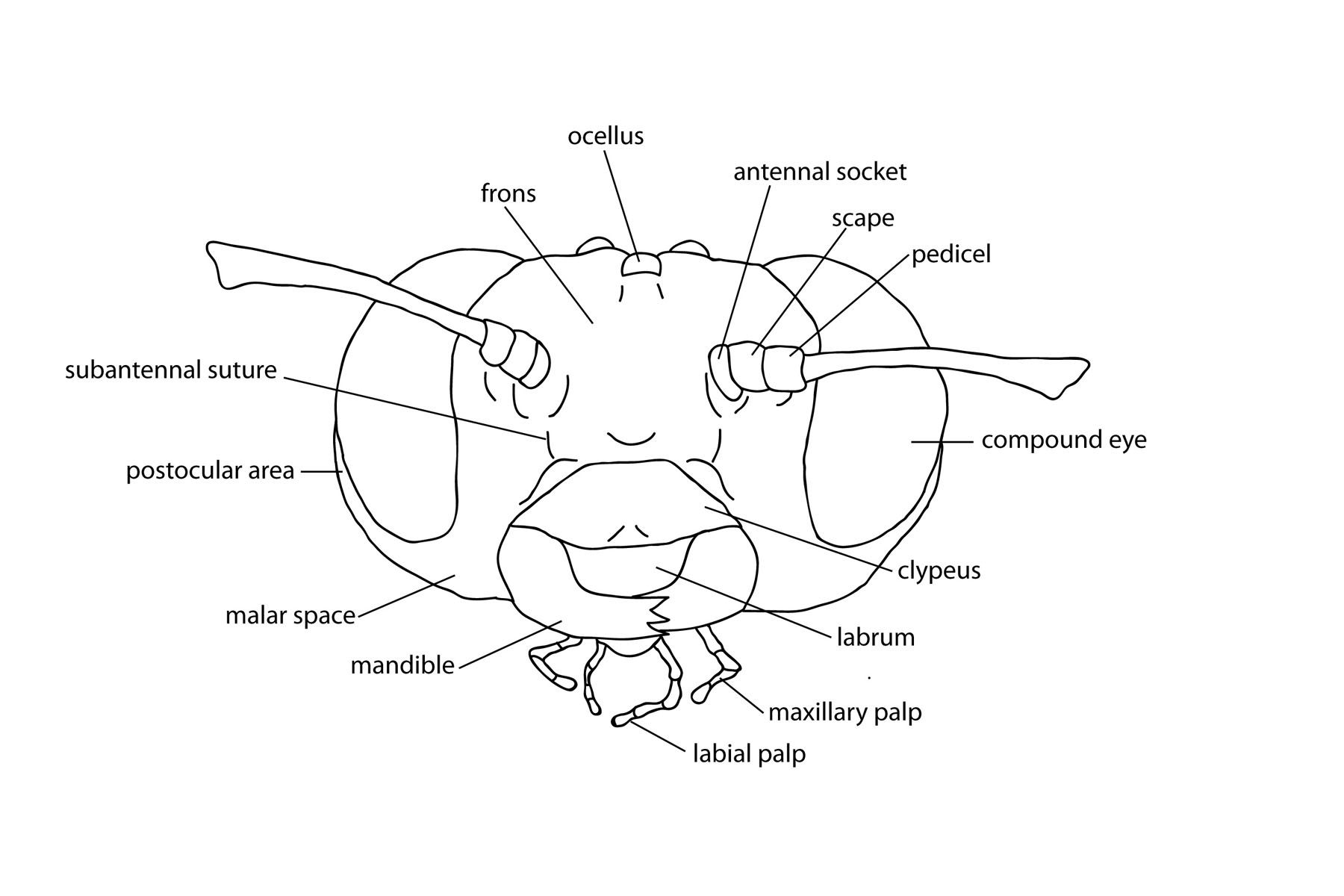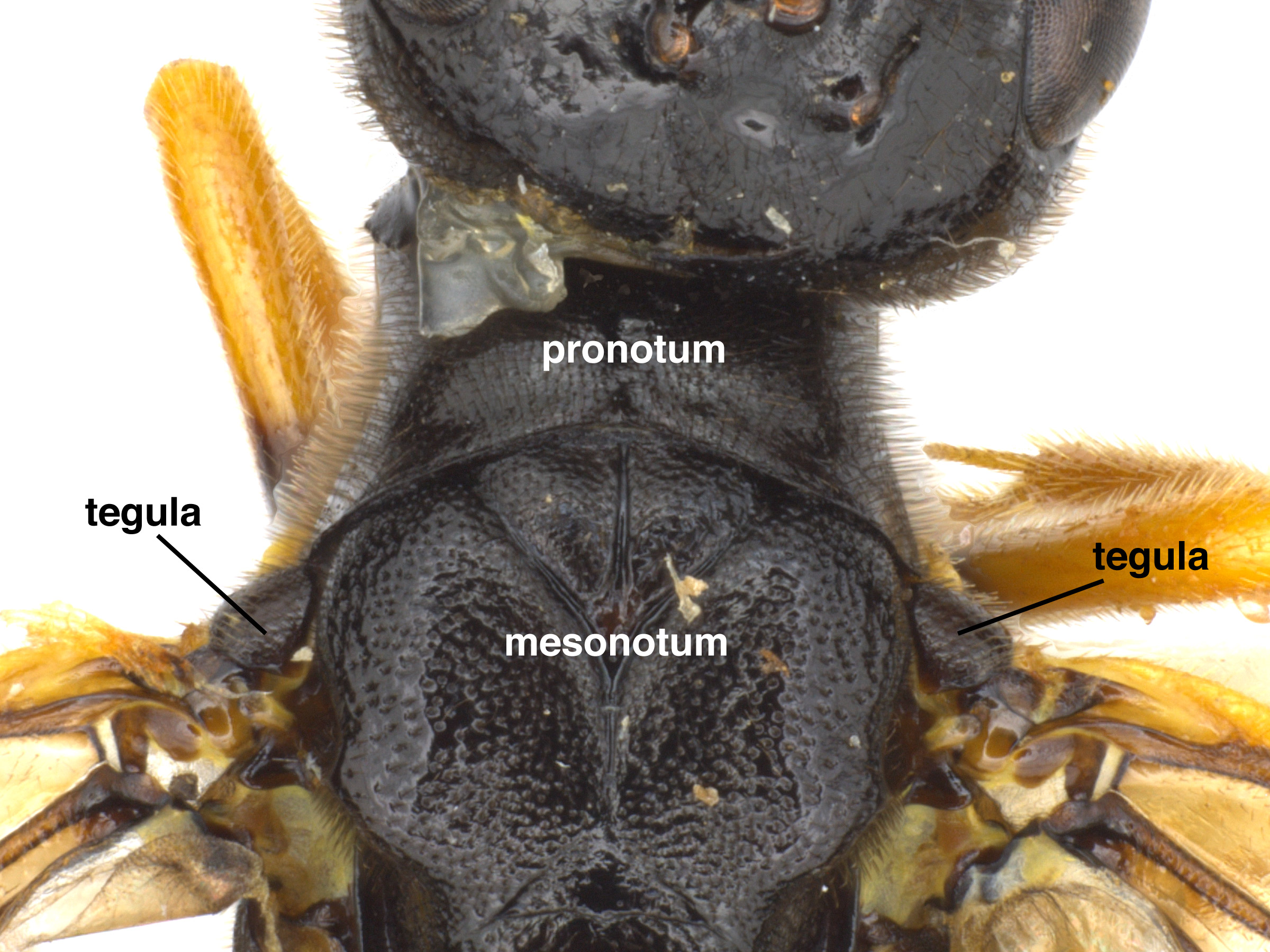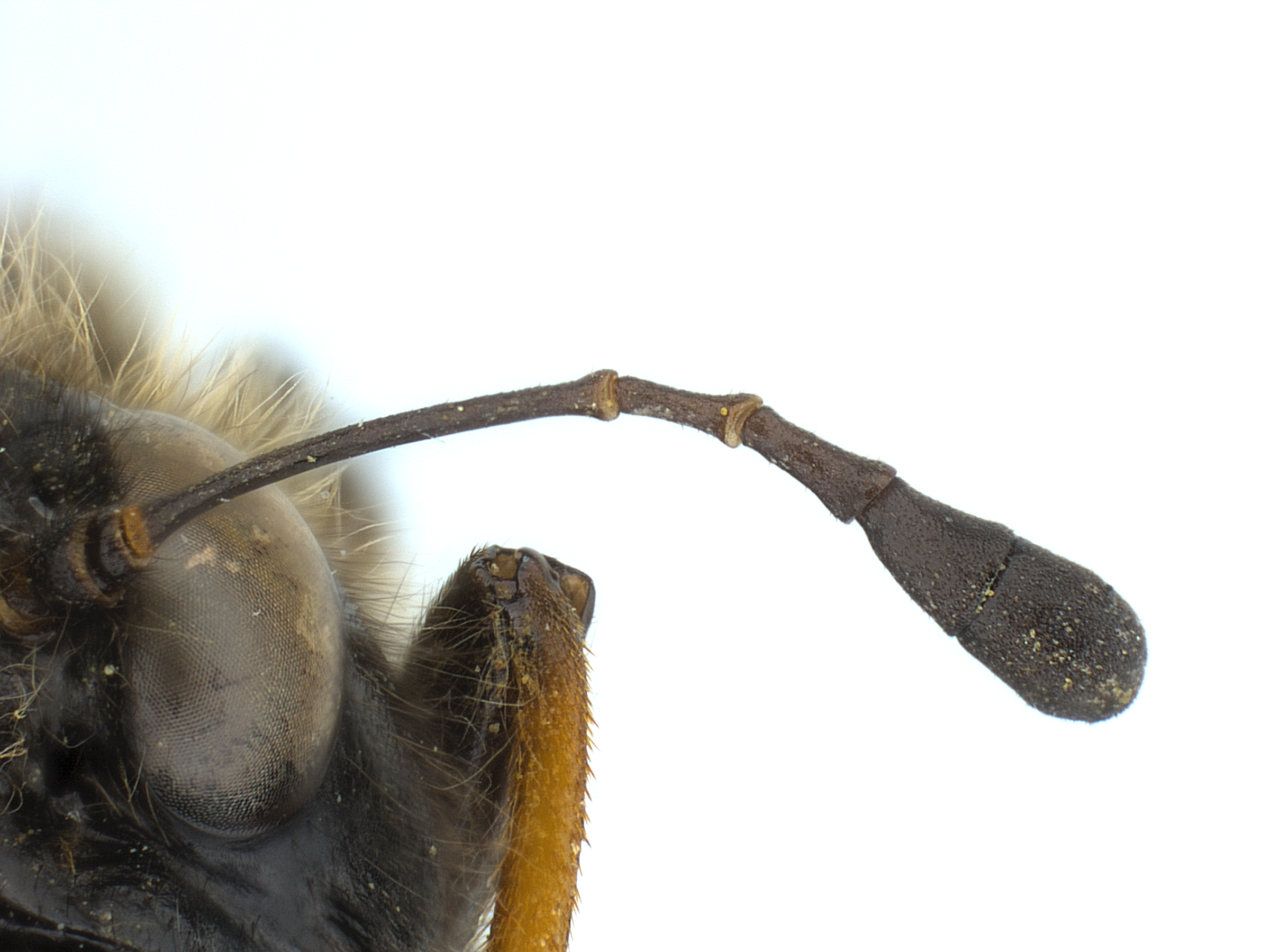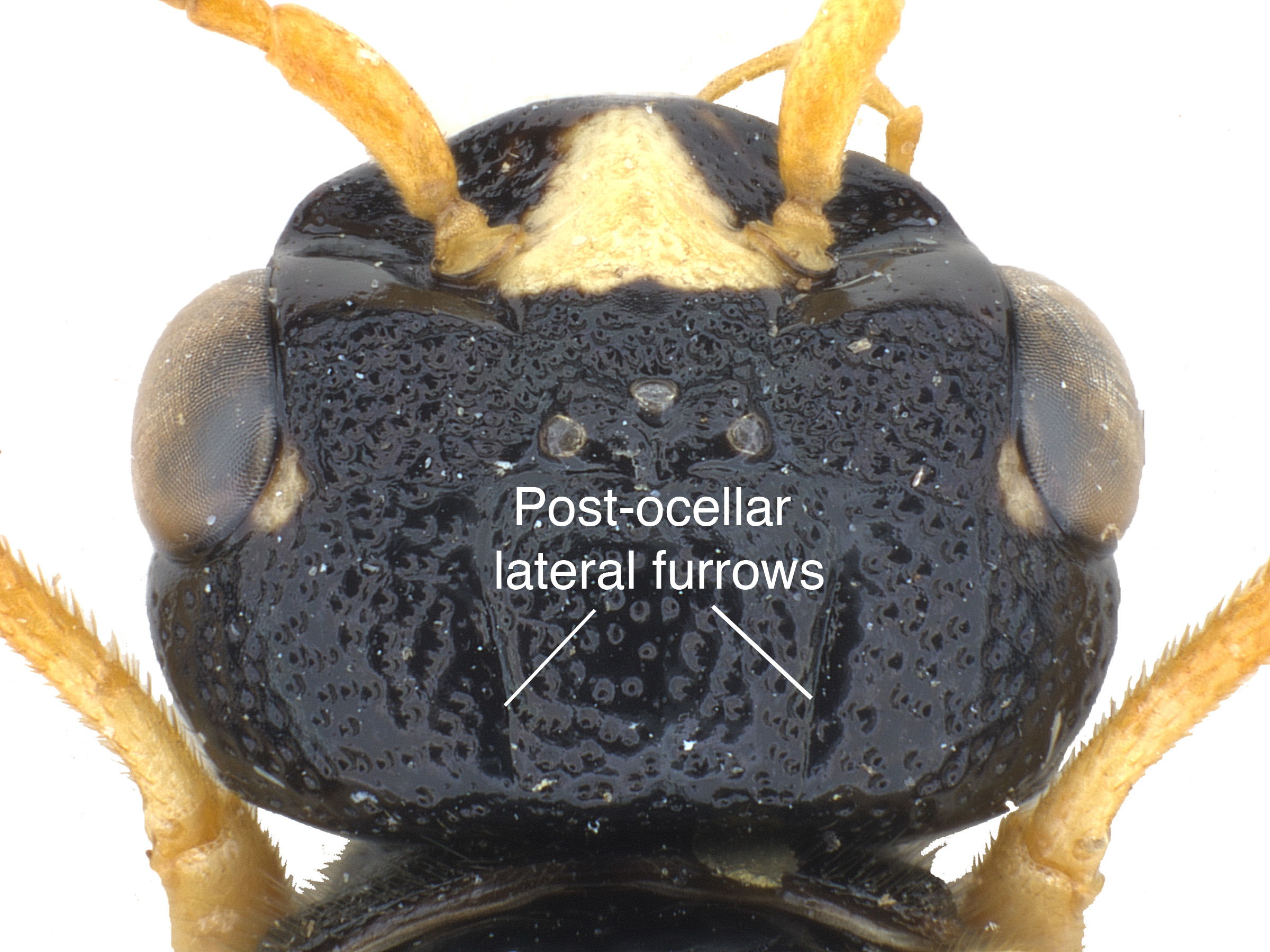Superfamily: Tenthrediniodea
Family: Cimbicidae
Family common name: cimbicid sawflies
Subfamilies: Abiinae, Cimbicinae, Coryninae, Pachylostictinae
The family Cimbicidae are generally robust, large sawflies that feed on deciduousdeciduous:
describing a tree that drops its foliage once a year and then re-grows it; often senescence occurs before winter and re-growth occurs in the spring
tree species. They are easily recognized by the distinctively club-like antennaeantenna:
the sensory organ emerging from the front of the head, usually between the compound eyes and above the clypeus; includes the flagellum, scape and pedicel
 (Smith and Middlekauff 1987Smith and Middlekauff 1987:
(Smith and Middlekauff 1987Smith and Middlekauff 1987:
Smith DR and Middlekauff WW. 1987. Suborder Symphyta. In: Stehr FW ed. Immature Insects. Kendall/Hunt Publishing Company. Vol. 1: 754 pp.).
Cimbicidae includes 22 genera and 205 species worldwide. Three genera and 13 species are NearcticNearctic:
describing the region of the Northern Hemisphere that includes North America south through northern Mexico
 in distribution (Taeger et al. 2018Taeger et al. 2018:
in distribution (Taeger et al. 2018Taeger et al. 2018:
Taeger A, Liston AD, Prous M, Groll EK, Gehroldt T, and Blank SM. 2018. ECatSymmdash;Electronic World Catalog of Symphyta (Insecta, Hymenoptera). Program version 5.0 (19 Dec 2018), data version 40 (23 Sep 2018). Senckenberg Deutsches Entomologisches Institut (SDEI), Muuml;ncheberg. https://sdei.de/ecatsym/ Accessed: 28 Jan 2020.).
Abia
Factsheet for:Abia
Glossary:labial palpus:
appendage emerging laterally from the labium

Cimbex
Trichiosoma
 medially constricted as seen from above (Goulet 1992Goulet 1992:
medially constricted as seen from above (Goulet 1992Goulet 1992: short ventrally (Goulet 1992Goulet 1992:
short ventrally (Goulet 1992Goulet 1992: spurs present (Goulet 1992Goulet 1992:
spurs present (Goulet 1992Goulet 1992: relatively long, about 0.4–0.5X the length of the entire antennaantenna:
relatively long, about 0.4–0.5X the length of the entire antennaantenna: (Goulet 1992Goulet 1992:
(Goulet 1992Goulet 1992: expanded at the apexapex:
expanded at the apexapex: (Goulet 1992Goulet 1992:
(Goulet 1992Goulet 1992: (Goulet 1992Goulet 1992:
(Goulet 1992Goulet 1992:In North America, Cimbicidae feed on deciduousdeciduous:
describing a tree that drops its foliage once a year and then re-grows it; often senescence occurs before winter and re-growth occurs in the spring
trees from the families Rosaceae, Betulaceae, Sapindaceae, Salicaceae, and Ulmaceae (Smith and Middlekauff 1987Smith and Middlekauff 1987:
Smith DR and Middlekauff WW. 1987. Suborder Symphyta. In: Stehr FW ed. Immature Insects. Kendall/Hunt Publishing Company. Vol. 1: 754 pp.).
Cimbicidae can be distinguished from other Tenthredinoidea families by the number of antennal segments, the distinctive clavateclavate:
club-like, thickening toward the tip; often used to describe antennae
 antennal form, and the wide, robust body shape (Goulet 1992Goulet 1992:
antennal form, and the wide, robust body shape (Goulet 1992Goulet 1992:
Goulet H. 1992. The genera and subgenera of the sawflies of Canada and Alaska: Hymenoptera. Symphyta. The insects and arachnids of Canada. Part 20. Agriculture Canada Publication.).
Cimbicidae in North America are external leaf feeders. LarvaeLarva:
the immature stage of holometabolous insects
 are relatively large and remarkably caterpillar-like, and are usually found curled on the underside of leaves. This family includes a couple of economic pests (see Cimbex and Abia
are relatively large and remarkably caterpillar-like, and are usually found curled on the underside of leaves. This family includes a couple of economic pests (see Cimbex and Abia
Factsheet for:Abia
Glossary:labial palpus:
appendage emerging laterally from the labium
 ) that can cause defoliation (Smith and Middlekauff 1987Smith and Middlekauff 1987:
) that can cause defoliation (Smith and Middlekauff 1987Smith and Middlekauff 1987:
Smith DR and Middlekauff WW. 1987. Suborder Symphyta. In: Stehr FW ed. Immature Insects. Kendall/Hunt Publishing Company. Vol. 1: 754 pp.).
World: The range of the family includes Europe, Asia, North and South America (Goulet 1992Goulet 1992:
Goulet H. 1992. The genera and subgenera of the sawflies of Canada and Alaska: Hymenoptera. Symphyta. The insects and arachnids of Canada. Part 20. Agriculture Canada Publication.).
North America: Cimbicidae are common in boreal and temperate regions in the United States and Canada (Goulet 1992Goulet 1992:
Goulet H. 1992. The genera and subgenera of the sawflies of Canada and Alaska: Hymenoptera. Symphyta. The insects and arachnids of Canada. Part 20. Agriculture Canada Publication.).